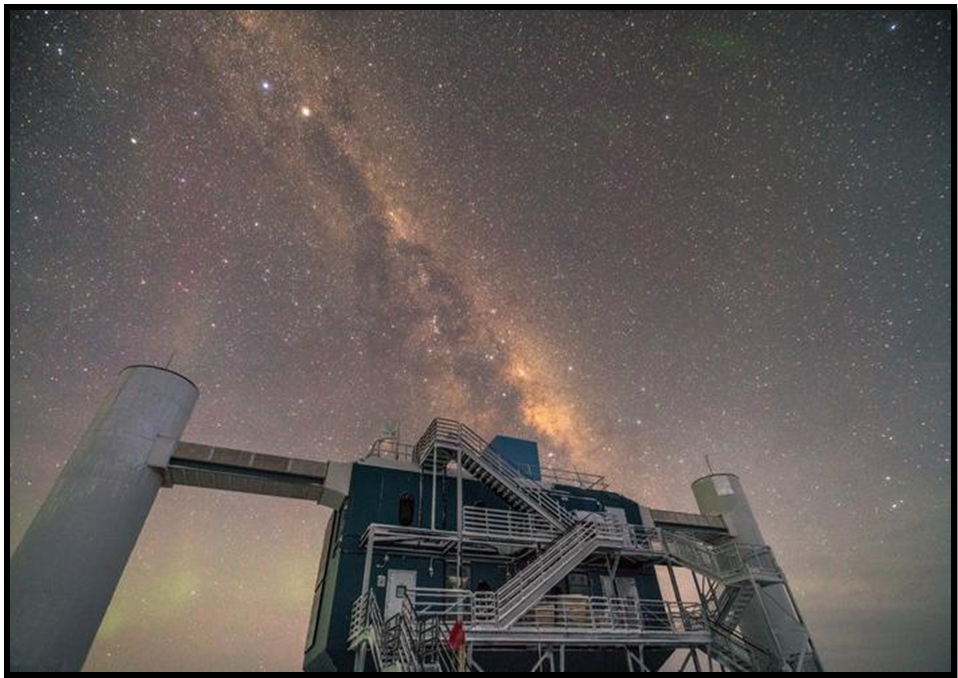PAINSTAKING STEPS: SCIENTISTS UNRAVEL THE NEUTRINO UNIVERSE
Source: static.toiimg.com
Relevance:
GS 3 –
Science and Technology, Achievements of Indians in Science & Technology, Awareness in Space, IT, Computers, Robotics, Nanotechnology, Biotechnology, and Intellectual Property Rights issues.
Focus:
- This analysis highlights recent advancements in neutrino research by scientists using the Large Hadron Collider (LHC).
- It discusses the importance of understanding neutrinos, challenges in studying these particles, and potential technological and scientific breakthroughs from this research.
Current Scenario:
- Neutrino Research: Neutrinos are subatomic particles with no electric charge and very small mass. Their weak interaction with matter makes them difficult to detect and study.
- Large Hadron Collider (LHC): The LHC at CERN has significantly advanced our understanding of fundamental particles, including neutrinos. Recent experiments have provided new insights into electron-neutrinos.
Challenges Faced:
- Detection Difficulty: Neutrinos’ weak interaction with matter makes their detection and measurement extremely challenging, requiring specialized detectors and advanced technologies.
- Mass Determination: Determining neutrinos’ exact mass is a significant challenge in particle physics. Understanding the mass hierarchy of the three types (electron, muon, and tau) is crucial for theoretical models.
- Interaction Mechanisms: Neutrinos interact through the weak nuclear force, complicating the study of their interactions and requiring highly sensitive equipment.
- Background Noise: Neutrino experiments face significant background noise from other particles and cosmic radiation, interfering with measurements.
- Large-Scale Detectors: Building and maintaining large-scale neutrino detectors involves considerable logistical and financial challenges.
Significance of Neutrino Research:
- Understanding the Universe: Neutrinos, abundant since shortly after the Big Bang, play a crucial role in the universe’s evolution. Studying them can reveal insights into fundamental physics laws and cosmic formation.
- Technological Advances: Neutrino research can lead to new technologies in communication, medical imaging, and particle detection.
- Particle Physics Theories: Neutrinos challenge the Standard Model of particle physics, potentially revealing new physics beyond the current framework.
- Cosmological Implications: Neutrinos influence the formation and evolution of galaxies and large-scale structures in the universe.
Recent Findings and Experiments:
- NOvA Experiment: This U.S. experiment provides valuable data on neutrino oscillations, refining our understanding of neutrino properties and mass differences.
- LHC Observations: Recent experiments at the LHC have observed electron-neutrinos in a particle collider, opening new avenues for studying neutrino interactions.
- Neutrino Mass Hierarchy: Determining the neutrino mass hierarchy is crucial for refining the Standard Model. Recent data from experiments like NOvA and Japan’s T2K have provided valuable insights.
- DUNE Project: The Deep Underground Neutrino Experiment (DUNE) in the U.S. aims to answer fundamental questions about neutrinos, including their role in the universe’s matter-antimatter asymmetry.
- JUNO Experiment: China’s Jiangmen Underground Neutrino Observatory (JUNO) aims to determine the neutrino mass hierarchy and explore neutrino oscillation parameters with high precision.
Potential Applications:
- Communication Technologies: Neutrino-based communication channels could revolutionize data transmission, potentially replacing electromagnetic waves.
- Medical Imaging: Neutrino detection techniques can be adapted for medical imaging, providing more accurate and less invasive diagnostic tools.
- Particle Physics Research: Understanding neutrinos can help address fundamental questions in particle physics, such as the matter-antimatter asymmetry.
- Astrophysics: Neutrinos from astrophysical sources like supernovae and gamma-ray bursts provide information about the most energetic and distant events in the universe.
- Nuclear Reactor Monitoring: Neutrinos can be used to monitor nuclear reactors in real-time, enhancing safety and detecting illicit nuclear activities.
- Earth’s Interior Studies: Neutrinos can help study the Earth’s interior composition and processes, offering insights into geophysical phenomena.
Case Studies
|
Global Collaboration and Initiatives
- Neutrino Observatories: Major neutrino observatories such as Super-Kamiokande in Japan, IceCube in Antarctica, and DUNE in the U.S. are part of international efforts to study neutrinos. They collaborate and exchange data to deepen our understanding of neutrino properties.
- International Research Collaborations: Projects like the NOvA experiment in the U.S. and the T2K experiment in Japan involve global teams working together to advance neutrino research.
- Policy and Funding Support: Governments and international bodies provide funding and policy backing for large-scale neutrino research, recognizing its potential for scientific and technological progress.
- G20 Climate Conference 2024: Discussions at the conference focused on promoting green finance, renewable energy, and technological innovation, underscoring the link between climate action and advanced scientific research such as neutrino studies.
Ethical and Philosophical Dimensions
- Scientific Curiosity: Neutrino research highlights humanity’s quest for knowledge and understanding of the universe. It reflects our inherent curiosity about the fundamental aspects of nature.
- Long-Term Investment: Funding neutrino research requires a long-term commitment. It underscores the importance of supporting fundamental science that may not offer immediate practical benefits but can lead to significant future breakthroughs.
- Interdisciplinary Impact: Neutrino research intersects with physics, astronomy, and engineering, demonstrating the value of interdisciplinary research in tackling complex scientific questions.
- Ethics of Scientific Funding: The substantial investment in neutrino research raises ethical questions about resource allocation and prioritization in science funding, balancing fundamental research with immediate societal needs.
Future Directions
- Enhanced Detectors: Developing larger and more sensitive detectors to improve precision and scope in neutrino measurements.
- International Collaborations: Strengthening global partnerships to pool resources, share data, and coordinate neutrino research efforts.
- Interdisciplinary Research: Promoting research that integrates neutrino physics with fields like astrophysics, cosmology, and nuclear physics.
- Public Engagement: Increasing public education and engagement about neutrino research to foster support and awareness of its importance.
- Policy Integration: Incorporating findings from neutrino research into policy frameworks for climate action, technological innovation, and international scientific collaboration.
Conclusion
Neutrino research stands at the cutting edge of particle physics, offering potential breakthroughs in understanding the universe. By addressing the challenges in detecting and comprehending these elusive particles, scientists can unlock significant technological and scientific advancements.
Key Terms Explained
|
Mains Question:
Discuss the importance of neutrino research in advancing our understanding of the universe. What are the challenges faced in studying neutrinos, and how can recent findings contribute to technological advancements? (250 words)
Source: The Hindu




